Superannuation is one of the most important investment strategies for many of us, and in some cases, it is the only means of financial support in retirement. However, there is a general lack of understanding as to how superannuation is dealt with in the event of death.
Important aspects in relation to your superannuation
Some issues which people are not aware of or misunderstand relating to superannuation are:
- Superannuation is not dealt with by your Will. Therefore, if you have formed the view that because you have a Will, your death benefit will be taken care of – you are incorrect.
- When you die, if you have not completed a Binding Death Benefit Nomination nominating a beneficiary for your death benefit, it will be left to the trustee of the superannuation fund to exercise its discretion to determine who will receive your death benefit (this could be your spouse, children, de facto spouse, interdependent). Therefore, your death benefit may be paid directly to your dependents or your estate (i.e. the legal representative of your estate to deal with as an estate asset).
- Many superannuation funds offer their members some form of life insurance (i.e. death cover). Many people are not aware they are paying for death cover through their superannuation. This means that in the event of death, the death benefit will increase by the amount of the death cover.
A common scenario
John is married to Jill. John has two children under the age of 18 years from a previous relationship. John has around $200,000 in his superannuation with an amount of $120,000 death cover. John passes away as a result of an accident.
John does not have a Binding Death Benefit Nomination. Jill has a mortgage of $300,000, which she now must service alone. Jill makes a claim for John’s death benefit to be paid to her as John’s spouse. However, John’s former spouse also makes a claim for John’s death benefit on behalf of John’s two minor children.
The trustee determines to divide John’s death benefit equally between Jill and John’s minor children. As a result of Jill not being able to meet the mortgage repayments on the home, she is forced to sell.
If John had a Binding Death Benefit Nomination, the trustee of his superannuation fund would have been bound to pay his nominated beneficiary his death benefit. In this case, John may have nominated Jill knowing she would not have been able to meet the mortgage repayments on her sole income.
How do you update your Binding Death Benefit Nomination?
A Binding Death Benefit Nomination is a document which must be printed and signed in accordance with rules outlined in regulation 6.17A of the Superannuation Industry (Supervision) Regulations 1994 (Cth). Most superannuation funds have a pro forma Binding Death Benefit Nomination form available to download from the web.
Updating your Binding Death Benefit Nomination can be as simple as printing the correct form and executing it. Most Binding Death Benefit Nomination forms include specific instructions in relation to signing the form (and the witnesses required). Therefore, it is important you read and follow the instructions as any error or oversight may mean the nomination is invalid.
If you have a self-managed superannuation fund, it is important that you seek advice from your solicitor or superannuation advisor to ensure your Binding Death Benefit Nomination is completed in accordance with the terms in your superannuation fund trust deed.
If you have any questions in relation to your estate plan, including your superannuation and Binding Death Benefit Nomination, do not hesitate to contact me.
The information provided in this article is for general information and educative purposes in summary form on legal topics which is current at the time it is published. The content does not constitute legal advice or recommendations and should not be relied upon as such. Whilst every care has been taken in the preparation of this article, Wills, Estates and Probate Lawyers (WEP Lawyers) cannot accept responsibility for any errors, including those caused by negligence, in the material. We make no representations, statements or warranties about the accuracy or completeness of the information and you should not rely on it. You are advised to make your own independent inquiries regarding the accuracy of any information provided on this website. WEP Lawyers does not guarantee, and accepts no legal responsibility whatsoever arising from or in connection to the accuracy, reliability, currency, correctness or completeness of any material contained in this article. Links to third party websites or articles does not constitute any endorsement or approval of those sites or the owners of those sites. Nothing in this article should be construed as granting any licence or right for you to use that content. You should consult the third party’s terms and conditions of use in relation to any third-party content. WEP Lawyers disclaims all responsibility and all liability (including liability for negligence) for all expenses, losses, damages and costs you might incur as a result of the information being inaccurate or incomplete in any way. Appropriate legal advice should always be obtained in actual situations.


